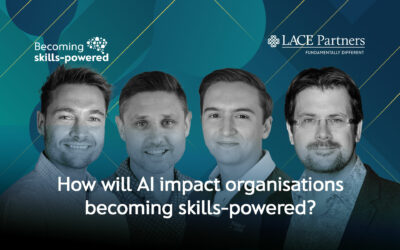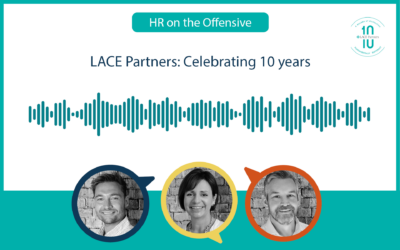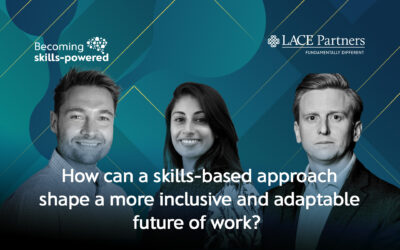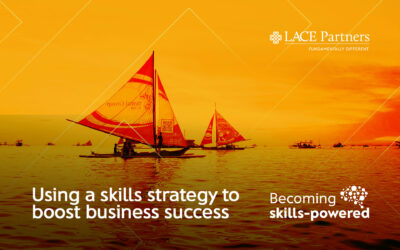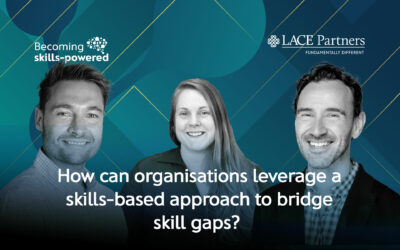We asked Kevin Green, who supported our HR on the Offensive whitepaper launch in June this year, to give us some thoughts from his perspective of the research which he has kindly outlined below. If you would like a copy of the whitepaper you can visit the HR on the Offensive section of our website.
In the LACE Partners 2019 research ‘HR on the Offensive’ it was clear that HR functions are at last moving away from a relentless focus on ‘good practice’ (doing the same as your competitors). Instead the UK’s most progressive HR functions are choosing to design and deliver a set of people services which differentiates them from other employers and maximises their ability to attract and retain critical talent. This in turn helps them to compete and win. This is changing the focus of HR’s strategy and is making HR more evidence based using candidate and employee data.
The quest to attract, hire and retain talent in markets where it’s in short supply is forcing organisations to think more deeply and strategically about what makes them different.
The language around this is changing fast as HR leaders focus on Employee Value Propositions (EVPs), Employee Experience (EEx) and Employee Engagement, all underpinned by robust measurement.
The majority of HRDs we interviewed in the LACE Partners research mentioned at least one of employee experience, employee value proposition or engagement as a key focus for their HR function. However there seemed to be different definitions at play and varied levels of understanding about how these three interconnected but separate activities should be used by business and HR.
Employee Value Proposition (EVP)
I feel it’s important that we create a common language amongst the HR profession. The Employee Value Proposition is your promise to candidates that don’t yet work for you. And it represents what they can expect to receive if they decide to join your business.
A great EVP is a bit like a great adverting campaign: it creates interest, excitement and curiosity amongst potential employees. It should work at both a rational and emotional level. The bottom line is that, as a consequence of how the business describes its relationship with its people, candidates decide if they want to work for your organisation. The best EVPs are a combination of everything you say about the organisation and the opportunities it presents. It should clearly describe your culture and what it’s like to work for the organisation. Externally, it needs to be clearly represented in job adverts, jobs pages and the organisation’s social presence.
Aspiration v reality
One of the big issues is not to over promise and under deliver. An EVP creates a detailed set of expectations amongst candidates and employees that your business needs to deliver because if you don’t new employees will feel let down or even betrayed! This of course leads to dissatisfaction in your workforce and often results in poor performance, people being less productive and potentially leaving the organisation.
A good EVP clearly needs to sell or promote the benefits of working for a particular business. It should accentuate the benefit of working for your company, however at the same time it must avoid being overly positive and creating expectations that can’t be met. An EVP can be aspirational to some extent but it can’t get too far ahead of the reality.
Candidate behaviour
People looking for their next role are interested in much more than a description of the job and the details of the package (pay and benefits). Today they also want to understand the company’s culture and hear about the firm’s commitment to development and flexible working. It goes further: they also want to understand the organisation’s purpose and values. These softer or cultural elements are as important as the hard facts to potential employees.
To find this information out, candidates are more resourceful and discerning than in previous generations. They don’t take what a business says about itself at face value – they do their own research. They look at Glassdoor or Indeed employee feedback reports, they connect with your leaders and staff on Twitter and LinkedIn, they scour what your employees really say about the organisation! Recognise that your EVP will be tested by potential employees and they can do this because it’s very transparent!
Employee generated content
Your best advocates for your business are your current employees. Many of the organisations that have got this right ask current employees to generate content about their value proposition which they put on their website and across their social media profile. This can include video, written content or photos, all giving an authentic view of the organisation’s culture and what it’s like to work there. This seems to resonate with candidates as it’s seen as more honest and a real representation rather than some marketing generated content on your job page.
Employee Experience (EEx)
This is the reality of what your people experience at work every day. The EEx is very much like customer experience. It’s much more than just policies or people management; it encompasses the working environment and the technology available to do the job, what it feels like to work in your business, what opportunities are available and how people are supported. It covers every facet of what it’s like to be an employee and work in your organisation.
Enlightened and progressive organisations have started to realise that, to unleash the full potential of their people, they need to thoughtfully and strategically enhance the end to end employee experience.
Employee lifecycle
One of the useful aspects of EEx for employers is to look at the experiences of their people at different stages of the employee lifecycle. What do people who have just joined the organisation think; how about people who have worked there for a number of years or people who are just about to leave. This segmentation of the employee base allows the organisation to respond to specific feedback in a more targeted and focused way. The process of thinking about employees from pre-hire right the way thorough to them leaving the organisation and becoming part of the alumni creates the opportunity to maximise the interactions an individual has with their employer over the long term. If businesses get this right we can create a sense of belonging and engagement. This leads to improved productivity and performance.
Exceptional experiences lead to high quality work and outstanding business results.
An overview of the candidate, employee and leaver lifecycle

Measure Candidate and Employee Engagement
Engagement is the outcome of a great candidate and employee experience.
We know from research that 80% of businesses don’t systematically measure the candidate experience. This means the vast majority of firms are flying blind. So, we need to ask for feedback from candidates at multiple points in the process. I also suggest that leaders apply for jobs in their own organisation to test the experience for themselves.
Improved engagement has been shown consistently to have a positive causal impact on both performance and productivity. If our people are not just satisfied but positively engaged they will be committed to helping the business meet its goals, they contribute ideas, feel energised and perform in their roles.
Data from ‘Engage for Success’ shows that in the U.K. only 30% of people are fully engaged. So, the potential organisational upside is huge: if we can move the 70% of people who are currently just going through the motions, we can unleash a wave of discretionary effort.
Engagement needs to be measured systemically and on a regular basis. We also need to collect this data at a local level so that we can compare and contrast and explore trends. My recommendation is a full survey every six months with a shorter data collection process at three and nine months.
The data collection process should ask questions about your employees’ experience as well as how they feel about their work and the organisation. This will allow you to fully explore what’s driving and what’s hindering your attempts to fully engage your people.
A Competitive People Strategy
For me the alignment of the three Es – EVP, Experience and Engagement – allows HR practitioners to develop a people strategy that is directly linked to business success. It can be measured and course corrected as progress is made. We now have the knowledge, evidence and the tools to create experiences which fully engage our people and deliver superior business results.
It’s now or never for HR.
If you would like to connect with Kevin you can do so on LinkedIn here or follow him on Twitter here. His book – Competitive People Strategy – is available on Amazon here.
If you’d like to talk to the LACE Partners team about your HR tech, transformation, change or adoption project, then reach out to us at info@lacepartners.co.uk.

